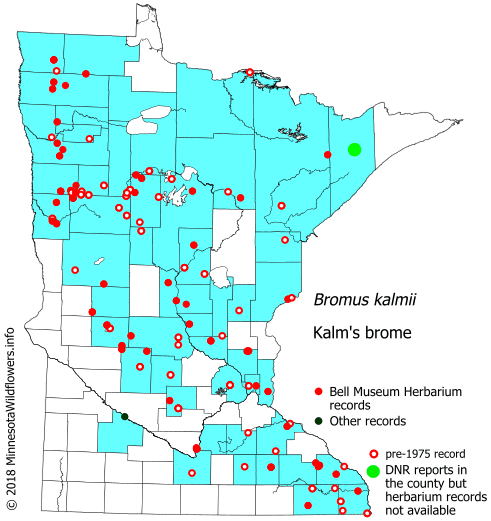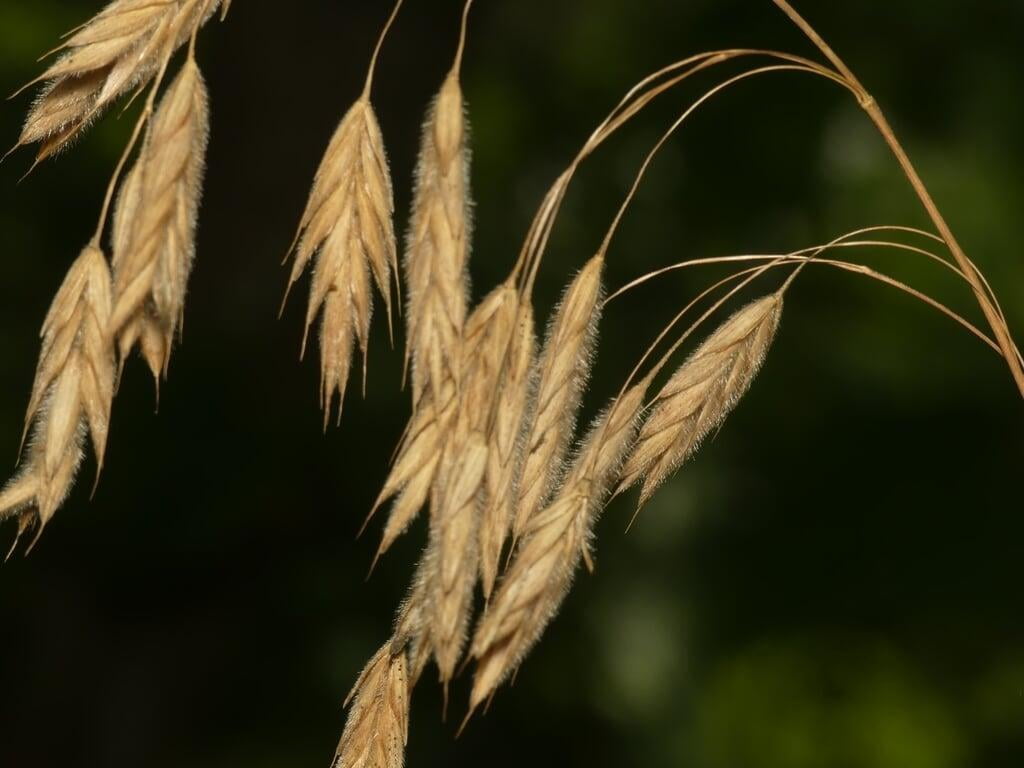Bromus kalmii
Bromus kalmii Description:
Bromus kalmii, commonly known as arctic brome, is a cool-season, perennial grass species native to North America. It typically grows in moist to wet areas, such as meadows, wetlands, and stream banks, but can also tolerate drier conditions.
Arctic brome is an ornamental grass that can grow up to 40 inches tall and has attractive seed heads that are green to purple in color. It provides valuable wildlife habitat, supporting a variety of insects, birds, and small mammals, and is also used for forage.
Bromus kalmii is well-suited to a range of ecological restoration and management applications, including erosion control, soil stabilization, and reclamation. It is drought-tolerant, making it a useful choice for areas with limited water resources, and can help control invasive species in grassland ecosystems.
Overall, Bromus kalmii is a hardy and adaptable grass species that is well-suited to a range of landscaping and ecological restoration applications.
Native Range:
Kalm's brome is found in the Upper Midwest and Northeastern United States. In Minnesota, Kalm's brome is found in most regions of the state to some degree.
Standard Plant Information:
Plant height: 20" to 40" inches
Fruiting time: July - September
Preferred habitat: Does well in full sun with dry sandy or rocky soils. Often found in prairies, savannas, wet meadows, calcareous fens, open woods, and jack pine forests.
Sowing:
For most homeowners, the best option is to scatter seed on the ground by hand broadcasting at a minimum of 15-16 pls lbs per acre. For even coverage, we recommend that you broadcast seed in perpendicular rows across the site to ensure even coverage.
Planting:
Simply dig a hole in the soil slightly larger than the plant’s roots. Ensure that the soil line of the plant is maintained during the transfer (i.e. the plant should be at the same level with the ground as it was in the pot). Pack any loose dirt back around the plant and make sure you water it well the same day to ensure it has the best chance of survival.








